Remington RM1425 Handleiding
Remington
Zaagmachine
RM1425
Bekijk gratis de handleiding van Remington RM1425 (88 pagina’s), behorend tot de categorie Zaagmachine. Deze gids werd als nuttig beoordeeld door 50 mensen en kreeg gemiddeld 4.9 sterren uit 25.5 reviews. Heb je een vraag over Remington RM1425 of wil je andere gebruikers van dit product iets vragen? Stel een vraag
Pagina 1/88

769-09976 / 00 06/14
Operator’s Manual
Electric Chain Saw
RM1425
TABLE OF CONTENTS
Service . . . . . . . . . . . . . . . . . . . . . . . . . . . . . . . . . . . . . . . . . . . . . . .1
Safety . . . . . . . . . . . . . . . . . . . . . . . . . . . . . . . . . . . . . . . . . . . . . . .2
Know Your Unit . . . . . . . . . . . . . . . . . . . . . . . . . . . . . . . . . . . . . . . .9
Essential Terms and Definitions . . . . . . . . . . . . . . . . . . . . . . . . . .10
Specifications . . . . . . . . . . . . . . . . . . . . . . . . . . . . . . . . . . . . . . . .11
Assembly . . . . . . . . . . . . . . . . . . . . . . . . . . . . . . . . . . . . . . . . . . . .12
Starting and Stopping . . . . . . . . . . . . . . . . . . . . . . . . . . . . . . . . . .13
Operation . . . . . . . . . . . . . . . . . . . . . . . . . . . . . . . . . . . . . . . . . . . .14
Maintenance . . . . . . . . . . . . . . . . . . . . . . . . . . . . . . . . . . . . . . . . .20
Cleaning and Storage . . . . . . . . . . . . . . . . . . . . . . . . . . . . . . . . . .26
Troubleshooting . . . . . . . . . . . . . . . . . . . . . . . . . . . . . . . . . . . . . . .27
Warranty . . . . . . . . . . . . . . . . . . . . . . . . . . . . . . . . . . . . . . . . . . . .28
All information, illustrations, and specifications in this manual are based
on the latest product information available at the time of printing. We
reserve the right to make changes at any time without notice.
Copyright© 2014 MTD SOUTHWEST INC, All Rights Reserved.
DO NOT RETURN THIS UNIT TO THE RETAILER. PROOF OF
PURCHASE WILL BE REQUIRED FOR WARRANTY SERVICE.
For assistance regarding the assembly, controls, operation or
maintenance of the unit, please call the Customer Support Department
at 1-866-206-2707 in the United States or 1-877-696-5533 in Canada.
Additional information about the unit can be found on our website at
www.remingtonpowertools.com.
For service, please call the Customer Support Department to obtain
a list of authorized service dealers near you. Service on this unit,
both within and after the warranty period, should only be performed
by an authorized and approved service dealer. When servicing, use
only identical replacement parts.
SERVICE
IMPORTANT: Read this manual thoroughly before using this product. Follow all instructions.
SAVE THESE INSTRUCTIONS

SAFETY
2
SYMBOL MEANING
WARNING: Signals a SERIOUS hazard.
Failure to obey a safety WARNING signal CAN result in
serious injury to yourself or to others.
CAUTION: Signals a MODERATE hazard.
Failure to obey a safety CAUTION signal MAY result in
property damage or injury to yourself or to others.
The purpose of safety symbols is to attract your attention to
possible dangers. The safety symbols, and their explanations,
deserve your careful attention and understanding. The safety
warnings do not by themselves eliminate any danger. The
instructions or warnings they give are not substitutes for proper
accident prevention measures.
NOTE: Advises you of information or instructions vital to the
operation or maintenance of the equipment.
DANGER: Signals an EXTREME hazard.
Failure to obey a safety result inDANGER signal WILL
serious injury or death to yourself or to others.
Read the operator’s manual and follow all warnings and safety
instructions. Failure to do so can result in serious injury to the
operator and/or bystanders.
CALIFORNIA PROPOSITION 65
WARNING: This product contains a
chemical known to the State of California to cause cancer,
birth defects or other reproductive harm.
• IMPORTANT SAFETY INSTRUCTIONS •
GENERAL POWER TOOL SAFETY WARNINGS
Save all warnings and instructions for future reference.
The term “power tool” in the warnings refers to your mains-operated
(corded) power tool or battery-operated (cordless) power tool.
1) Work Area Safety
a) Keep work area clean and well lit. Cluttered or dark areas
invite accidents.
b) Do not operate power tools in explosive atmospheres, such
as in the presence of flammable liquids, gases or dust.
Power tools create sparks which may ignite the dust or fumes.
c) Keep children and bystanders away while operating a
power tool. Distractions can cause you to lose control.
2) Electrical Safety
a) Power tool plugs must match the outlet. Never modify the
plug in any way. Do not use any adapter plugs with
earthed (grounded) power tools. Unmodified plugs and
matching outlets will reduce risk of electric shock.
b) Avoid body contact with earthed or grounded surfaces
such as pipes, radiators, ranges and refrigerators. There is
an increased risk of electric shock if your body is earthed or
grounded.
c) Do not expose power tools to rain or wet conditions. Water
entering a power tool will increase the risk of electric shock.
WARNING:Read all safety warnings and all
instructions. Failure to follow the warnings and instructions
may result in electric shock, fire and/or serious injury.
d) Do not abuse the cord. Never use the cord for carrying,
pulling or unplugging the power tool. Keep cord away from
heat, oil, sharp edges or moving parts. Damaged or
entangled cords increase the risk of electric shock.
e) When operating a power tool outdoors, use an extension
cord suitable for outdoor use. Use of a cord suitable for
outdoor use reduces the risk of electric shock.
f) If operating a power tool in a damp location is unavoidable,
use a ground fault circuit interrupter (GFCI) protected
supply. Use of a GFCI reduces the risk of electric shock.
3) Personal Safety
a) Stay alert, watch what you are doing and use common
sense when operating a power tool. Do not use a power
tool while you are tired or under the influence of drugs,
alcohol or medication. A moment of inattention while
operating power tools may result in serious personal injury.
b) Use personal protective equipment. Always wear eye
protection. Protective equipment such as dust mask, non-skid
safety shoes, hard hat, or hearing protection used for
appropriate conditions will reduce personal injuries.
c) Prevent unintentional starting. Ensure the switch is in the
off-position before connecting to power source and/or
battery pack, picking up or carrying the tool. Carrying
power tools with your finger on the switch or energizing power
tools that have the switch on invites accidents.
d) Remove any adjusting key or wrench before turning the
power tool on. A wrench or a key left attached to a rotating
part of the power tool may result in personal injury.
e) Do not overreach. Keep proper footing and balance at all
times. This enables better control of the power tool in
unexpected situations.

3
Chain saw safety warnings:
•Keep all parts of the body away from the saw chain when
the chain saw is operating. Before you start the chain saw,
make sure the saw chain is not contacting anything. A
moment of inattention while operating chain saws may cause
entanglement of your clothing or body with the saw chain.
•Always hold the chain saw with your right hand on the rear
handle and your left hand on the front handle. Holding the
chain saw with a reversed hand configuration increases the
risk of personal injury and should never be done.
•Hold the power tool by insulated gripping surfaces only,
because the saw chain may contact hidden wiring or its
own cord. Saw chains contacting a “live” wire may make
exposed metal parts of the power tool “live” and could give the
operator an electric shock.
•Wear safety glasses and hearing protection. Further
protective equipment for head, hands, legs and feet is
recommended. Adequate protective clothing will reduce
personal injury by flying debris or accidental contact with the
saw chain.
•Do not operate a chain saw in a tree. Operation of a chain
saw while up in a tree may result in personal injury.
•Always keep proper footing and operate the chain saw
only when standing on fixed, secure and level surface.
Slippery or unstable surfaces such as ladders may cause a loss
of balance or control of the chain saw.
•When cutting a limb that is under tension be alert for
spring back. When the tension in the wood fibers is released
the spring loaded limb may strike the operator and/or throw
the chain saw out of control.
•Use extreme caution when cutting brush and saplings. The
slender material may catch the saw chain and be whipped
toward you or pull you off balance.
•Carry the chain saw by the front handle with the chain saw
switched off and away from your body. When transporting
or storing the chain saw always fit the guide bar cover.
Proper handling of the chain saw will reduce the likelihood of
accidental contact with the moving saw chain.
•Follow instructions for lubricating, chain tensioning and
changing accessories. Improperly tensioned or lubricated
chain may either break or increase the chance of kickback.
•Keep handles dry, clean, and free from oil and grease.
Greasy, oily handles are slippery causing loss of control.
•Cut wood only. Do not use chain saw for purposes not
intended. For example: do not use chain saw for cutting
plastic, masonry or non-wood building materials. Use of
the chain saw for operations different than intended could
result in a hazardous situation.
Causes and operator prevention of kickback:
Kickback may occur when the nose or tip of the guide bar touches
an object, or when the wood closes in and pinches the saw chain in
the cut.
Tip contact in some cases may cause a sudden reverse reaction,
kicking the guide bar up and back towards the operator.
Pinching the saw chain along the top of the guide bar may push the
guide bar rapidly back towards the operator.
Either of these reactions may cause you to lose control of the saw
which could result in serious personal injury. Do not rely exclusively
upon the safety devices built into your saw. As a chain saw user,
you should take several steps to keep your cutting jobs free from
accident or injury.
Kickback is the result of tool misuse and/or incorrect operating
procedures or conditions and can be avoided by taking proper
precautions as give below:
•Maintain a firm grip, with thumbs and fingers encircling
the chain saw handles, with both hands on the saw and
position your body and arm to allow you to resist kickback
forces. Kickback forces can be controlled by the operator, if
proper precautions are taken. Do not let go of the chain saw.
•Do not overreach and do not cut above shoulder height.
This helps prevent unintended tip contact and enables better
control of the chain saw in unexpected situations.
•Only use replacement bars and chains specified by the
manufacturer. Incorrect replacement bars and chains may
cause chain breakage and/or kickback.
•Follow the manufacturer’s sharpening and maintenance
instructions for the saw chain. Decreasing the depth gauge
height can lead to increased kickback.
f) Dress properly. Do not wear loose clothing or jewelry.
Keep your hair, clothing and gloves away from moving
parts. Loose clothes, jewelry or long hair can be caught in
moving parts.
g) If devices are provided for the connection of dust
extraction and collection facilities, ensure these are
connected and properly used. Use of dust collection can
reduce dust-related hazards.
4) Power Tool Use and Care
a) Do not force the power tool. Use the correct power tool
for your application. The correct power tool will do the job
better and safer at the rate for which it was designed.
b) Do not use the power tool if the switch does not turn it on
and off. Any power tool that cannot be controlled with the
switch is dangerous and must be repaired.
c) Disconnect the plug from the power source and/or the
battery pack from the power tool before making any
adjustments, changing accessories, or storing power
tools. Such preventive safety measures reduce the risk of
starting the power tool accidentally.
d) Store idle power tools out of the reach of children and do
not allow persons unfamiliar with the power tool or these
instructions to operate the power tool. Power tools are
dangerous in the hands of untrained users.
e) Maintain power tools. Check for misalignment or binding
of moving parts, breakage of parts and any other condition
that may affect the power tool’s operation. If damaged,
have the power tool repaired before use. Many accidents
are caused by poorly maintained power tools.
f) Keep cutting tools sharp and clean. Properly maintained
cutting tools with sharp cutting edges are less likely to bind
and are easier to control.
g) Use the power tool, accessories and tool bits etc. in
accordance with these instructions, taking into account
the working conditions and the work to be performed. Use
of the power tool for operations different from those intended
could result in a hazardous situation.
5) Service
a) Have your power tool serviced by a qualified repair person
using only identical replacement parts. This will ensure that
the safety of the power tool is maintained.
Product specificaties
| Merk: | Remington |
| Categorie: | Zaagmachine |
| Model: | RM1425 |
Heb je hulp nodig?
Als je hulp nodig hebt met Remington RM1425 stel dan hieronder een vraag en andere gebruikers zullen je antwoorden
Handleiding Zaagmachine Remington

5 Mei 2023

16 April 2023

23 Maart 2023

2 Februari 2023

29 Januari 2023

26 Januari 2023

13 Januari 2023

19 November 2022

21 Oktober 2022
Handleiding Zaagmachine
- Kress
- Hitachi
- Scheppach
- Defort
- Florabest
- Hilti
- Ferm
- Matrix
- RIDGID
- Ferrex
- Herkules
- Solo
- Pattfield
- Jonsered
- Craftsman
Nieuwste handleidingen voor Zaagmachine
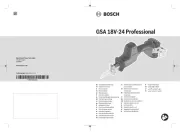
15 September 2025
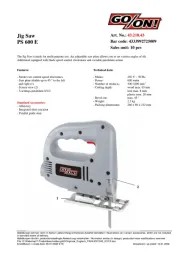
7 September 2025
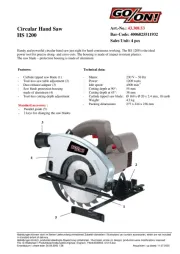
7 September 2025
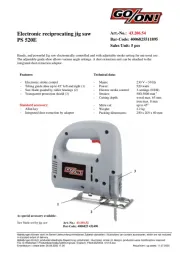
7 September 2025
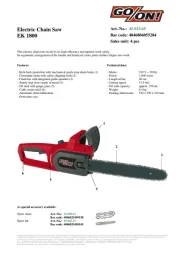
7 September 2025
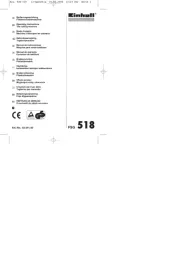
2 September 2025
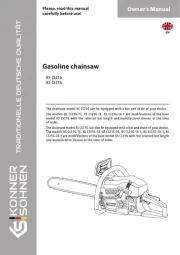
2 September 2025
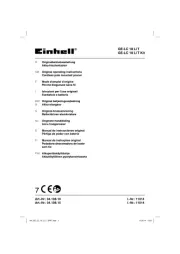
2 September 2025
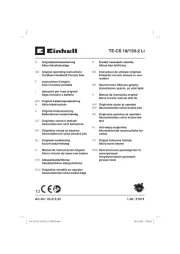
2 September 2025
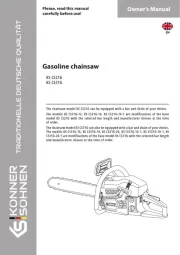
2 September 2025